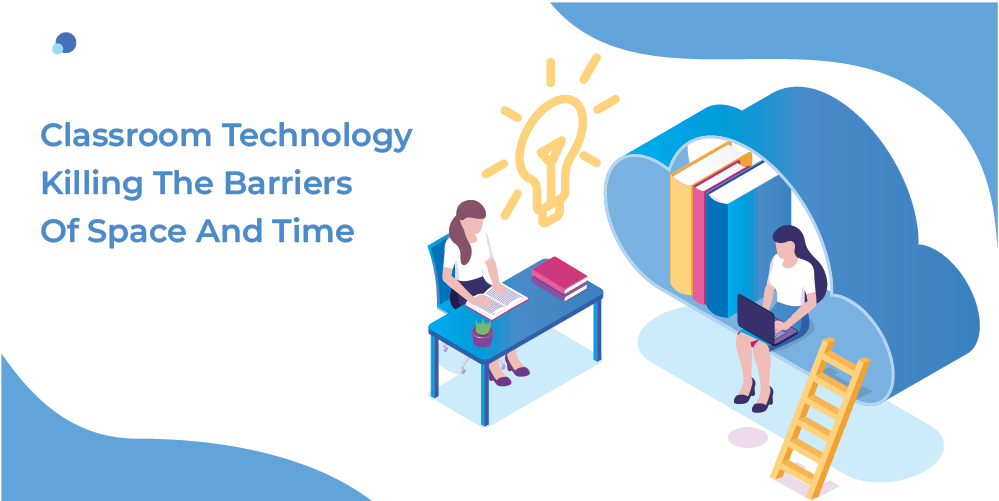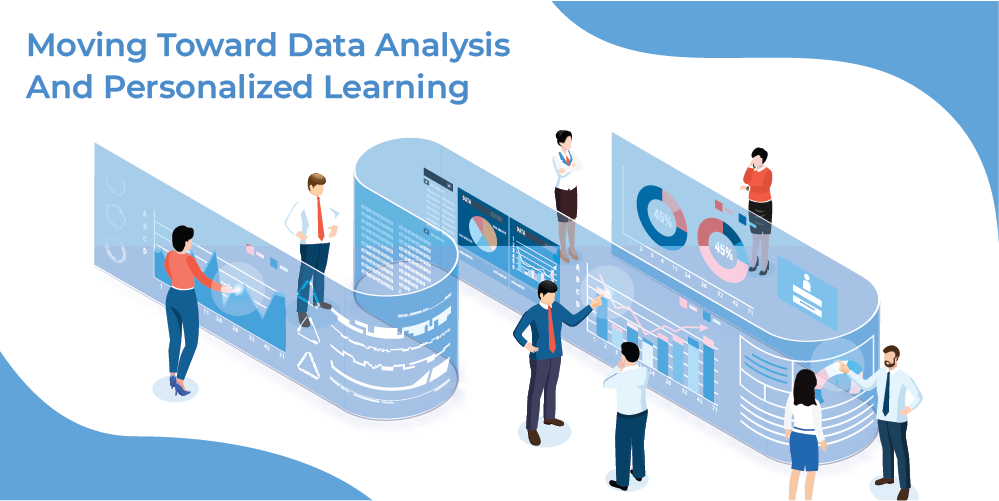Are Classrooms Becoming Too Dependent On Technology?
Technological advancement has been phenomenal in the past decade. It has changed how we communicate, exchange money, and order food and services online. Technology advancement has happened at an exponential rate since then; technology is incorporated inevitably into our lives, like the telephone and email.
It has been an incredible transformation in how sharing and passing information has changed since the 1900s. Technology has seen some unprecedented and mind-boggling advances since the 1900s. If we talk about technology in education, then the ratio of computers in the classroom in the 1900s in the United States was 1:20 and restricted to the laboratories. It was reduced to 1:5 by 2005. Ai is waiting around the corner for what it promises to the education system.
The days of using the computer in the classroom are passé. Children are using Tablets and iPads in the classrooms. The use of technology in education has been a magical gateway to information, communication and resources, unlike anything we could have dreamt. Technology in education, or EdTech, has been the most significant single technological advancement because it opened incredible opportunities for studying and sharing information that was impossible before.
Technology is no longer used passively in the accounts department or the “back office” but has reached the classroom in myriad, unfathomable ways. There is no other way but to morph technology at the school for better, data-backed results.
Internet technologies and technology in education promise immensely transformative possibilities across almost every aspect of modern society. Yet the question remains: do we use technology more than is healthy for us, and are we using too much technology in the classrooms? Many parents, teachers, and educators express concern over the usage, but the benefits outweigh the risks.
Technology- Intrusive Or Unintrusive?
Sarah Biltmore had a scheduling conflict. The principal of her school needed a personal day in November 2021, but she had important meetings with two teachers on her calendar. Pre-pandemic, Sarah would have had to shuffle around her commitments to squeeze in the sessions on another day. Instead, she managed to keep her day off but still meet her teachers at the appointed time on Google Meet, the video conferencing platform. The school could conduct video meetings before the pandemic but rarely bothered with the technology. That quickly changed schools nationwide and pivoted to virtual operations in the spring of 2020. With students and teachers back in the classroom, Sarah can’t imagine working without the digital tool. “It was learning born out of necessity,” she says.
In a crisis such as COVID-19, digital technologies kept the education system afloat. Children were learning from the confines of their homes, and integrating technology became imperative. Classroom technology allowed teachers to manage classroom tasks efficiently and collaborate with their colleagues in far-flung places during the pandemic. Teachers could plan lessons and deliver content online.

Classroom Technology Killing The Barriers Of Space And Time
One of the strengths of tech-enhanced learning is that it helps to eliminate the barriers to education imposed by space and time. Education technology is no longer a disrupter. Technology has made sharing information and knowledge possible, efficiently communicating at the click of a button and building learning communities across the globe.
Classrooms that use technology reap many benefits. Not only does content creation and sharing become easy, but there is also a huge possibility of personalizing pedagogy and accessing rich digital resources. Teachers are using technology to address the diverse learning needs of a diverse student population.
Some have started questioning students’ over-reliance on technology. We criticize the use of Smartphones for killing conversations—the distraction of having our Facebook, email, Twitter, and Instagram constantly at our fingertips. The fact is that we are looking at a more technologically-dependent world. And the faster we accept it, the better we will channel its usage.
Pedagogy And Learning At The Click Of A Button
On the other hand, traditional classroom instruction fails to provide an immediate learning environment. Let us admit that teachers actively use Google and other platforms to research topics and plan their lessons to encourage more engagement.
Lesson planning, attendance, faster evaluations, multiple and topical formatives, and Rubrics are available at the most immediate possible variety and speed. Some of the digital tools are unrivaled by traditional methods of teaching. An online classroom calendar with class, assignment, assessment and examination schedule, semester breaks, sharing and collaborating with students, colleagues, and administration. Traditional pedagogy methods cannot compete with the efficient ways digital classroom technology fills the void. Students have smartphones and clicker devices that provide instant access and connection. They offer a quick and easy technique for teachers to determine students’ learning of the presented content quickly.
The integration of technology has made learning more engaging and exciting. Projectors, computers, and other cutting-edge technology like AR-VR have added to the learning experience. Classroom technology has strengthened project-based, collaborative learning and group participation.
The Internet is a repertoire of prodigious information for educators and students- diametric to the time they would have spent at a library leafing through books. You can go to the library and dig through years of medical journals to find out the cause of migraine or Google and get multiple answers and research papers in seconds.
Classroom Technologies have improved the quality of education. Teachers and instructors use technology to generate the most effective instructional content, use AR-VR for experiential learning, and collaborate with colleagues and parents for personalized learning.
Technology has proven to be the game changer, and technology will prove to be the disruptor. The education industry is excited by ChatGPT and what it will bring to the classrooms. It will be on instructional designers and educators to change their views and find ways of incorporating technology.
Finding ways to use technology to emulate, replace, or enhance personal interactions is critical to institutional, student, and faculty success.
Teachers can use technology to create interactive learning experiences through in-person or virtual formats. Mobile apps, two-way video technology, and discussion forums are valuable tools.
Additionally, digital services should keep up with students’ desire for convenience. By offering flexible online tutoring, coaching, mentorship, and advising hours, every student can access what they need without having to visit campus.

Moving Toward Data Analysis And Personalized Learning
Almost every aspect of education has already moved towards data analysis to personalized instruction. There is a tidal wave of software, different sets of algorithms fundamentally designed for data analysis to inform future instruction. The education industry is thriving with software technology; digital apps, tools, and data analytics have proved to be metamorphic to plan lessons and inform customized instruction.
Classroom data reveals the minutest point where the student falters -what a student may be missing in completing a task, a cross-analysis of their competency with their interests and skill sets and offer remedial action to adjudicate further instruction.
Classroom technology has strengthened traditional pedagogy and direct instruction and has positively enforced one-on-one subject-expertise meets. It is easy to stick to conventional in-person. But to remain relevant, it will be imperative to juxta-position technology with classroom teaching because humans cannot compete with technology concerning the speed and accuracy of processing data. Technology will ensure data-driven personalized instruction.
The pessimists will make people believe that the strife in the education industry concerning technology usage in education is fundamental and dismal. There will be mass layoffs because technology will take over human talent in the future, and things must go back to how they used to be. But the reality is going to be different. Educators are passionately involved in discussions on bringing Artificial intelligence actively into the education domain.
Educators worry about the potential challenges- vis-a-vis technology hampering social interactions, detrimental to creativity, children suffering short attention spans, and plagiarism of content. Still, these are minuscule compared to the opportunities classroom technology offers in transforming the learning trajectory.
The principal in each school building has a lot to manage concerning its many educators and administrators, as each contributor will directly affect student performance outcomes. Even more importantly, schools specify a list of indicators such as attendance, behavior, grades, credits over time, assessment scores, extracurricular participation, how many times a student has changed buildings,
Chronicle Cloud gives teachers, principals and administrators an easy way to look at the data. From lesson plans, attendance, conferring notes, and formative and summative assessments, Chronicle Cloud also helps connect the teacher with parents to have meaningful one-on-one conversations with the students, parents, and other team members.
Also, one of the great byproducts of this report is the ability to identify students that have the potential to be “at risk.” So we can become proactive to ask, What can we do to prevent these students from becoming at risk, and what programs can we implement for them?
Technology can never replace the effectiveness of a talented teacher, and it’s essential always to maintain sight of that. The digital age can provide many tools to improve and increase learning. Human talent is unquestionably the most critical factor in driving technology in the classroom. Teachers are and will be at the fulcrum of knowledge and education-whether on-site or remotely. And the power and potential of technology to expand connections and enrichment will be crucial and revolutionize the global education spectrum.
Even the critics cannot ignore the incredible opportunities technology in education or classroom technology promises. It is facetious to suggest the abandonment of technology in education, as the wealth of opportunities it provides students is undeniable.
And interactive learning and online teaching can be brilliant experiences, but they must maintain the vital dialogue and bond between teacher and pupil. By ensuring that our students remain educated in interpersonal and “real-world” skills and electronic know-how, we can best prepare them to make the most of the opportunities technology offers without suffering any potentially detrimental consequences.
